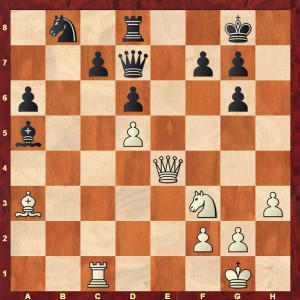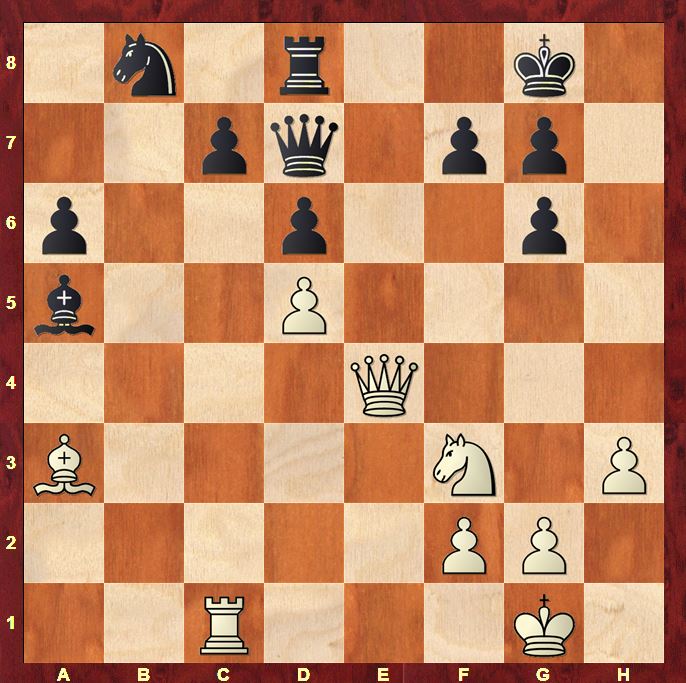One of my favourite pieces of chess literature is the short 1964 article by Robert J Fischer entitled “The 10 greatest masters in history” which Edward Winter has made available on his excellent Chess History site (http://www.chesshistory.com/winter/extra/fischer4.html) The first time I read it, I dismissed Fischer’s views as eccentric, but the more I learn, the more I have come to understand his insights. Fischer respected Alekhine’s play but he wasn’t a fan: “Alekhine is a player I’ve never really understood; yet strangely, if you’ve seen one Alekhine game, you’ve seen them all. He always wanted a superior centre; he manoeuvred his pieces toward the kingside and around the 25th move, began to mate his opponent…His play was fantastically complicated, more so than any player before or since… He played gigantic conceptions, full of outrageous and unprecedented ideas. It’s hard to find mistakes in his game, but in a sense his whole method of play was a mistake”.
I thought of this comment when browsing through the Volume II (Russian edition) of Kotov’s biography of Alekhine. I caught sight of a diagram and a flurry of exclamation marks from the annotator and thought “That can’t be right!”. It was a typical whirlwind Alekhine attack starting on the 26th(!) move but I was sure that Black could have defended much better…

Black has won 2 pawns but his king is short of piece cover: his bishop on a5 and knight on b8 are both offside though the bishop does fulfil the important defensive task of preventing White from taking control of the e-file with Re1. We’re just past move 25, so it’s time for Alekhine to start attacking… He doesn’t disappoint! The game was part of an 8-game simultaneous display against consulting partners which he won 7-1.
Alekhine – Prils/Blaut
Antwerp consultation 1923
26.Bb2 Re8 27.Qh4
Black now played 27…f6 to which Alekhine replied 28.Nd4. We’ll examine that later.
I was greatly attracted to 27…Re2 as I had spotted a cunning tactical idea!
27…Re2
The idea of this move is that after 28.Bd4 f6, White no longer has Nd4-e6 while after 28.Ba1, Black could simply play 28…Bb6 and his counterplay against f2 prevents White from attacking with Ng5.
However, the key question seemed to me: can White play 28.Ng5 and sacrifice the piece?
28.Ng5 Rxb2
a) 29.Qh7+ Kf8 30.Qh8+ Ke7 31.Qxg7 is the obvious way to continue. Now I had spotted something quite neat:
31…Qf5 (31…Re2 32.Nxf7 Qe8 is Stockfish’s even neater solution!) 32.Qxb2 Qxg5 33.Ra1 (33.h4 Qh6) 33…Bb6 34.Re1+ Kd7 35.Qh8 Qd8 36.Qg7 Kc8 37.Qxf7 Qh4 wins!
b) 29.Rc4 and now I spent masses of time on 29…Re2 30.Rf4 (30.Qh7+ Kf8 31.Rf4 is the same) 30…f6 31.Qh7+ Kf8
Note that after 32.Rxf6+ gxf6, the “useless” Nb8 protects the queen on d7!
b1) 32.Qxg6
Threatening 33.Nh7+ Ke7 34.Rxf6
32…Bc3 33.Ne6+ (33.Rh4 fxg5 34.Rh8+ Ke7) 33…Rxe6 34.dxe6 Qxe6
Wins for Black, though not without a little bit of tactical trickiness to finish off.
35.Re4 Qf7 36.Qh7 Be5 37.f4 f5 38.Re2 Bd4+ 39.Kh2 g6;
b2) 32.Qh8+ Ke7 33.Ne6 (33.Qxg7+ Kd8 34.Qxf6+ Kc8)
b21) 33…Qe8 34.Qxg7+ Qf7 35.Qh8 Nc6 (35…Rxe6 36.dxe6 Qxe6 37.Qxb8)
and now not 36.Rh4 Winning I thought! 36…Rxe6 37.dxe6 Qf8 (37…Qxe6 38.Rh7+; 37…Kxe6 38.Rh7) 38.Qh7+ (38.Rh7+ Ke8) 38…Kxe6 39.Qxg6 Ne5 wins…but for Black
36.Rc4 is best as Stockfish points out with a computer draw after 36…Qe8 37.Qg7+ Qf7 38.Qh8
b22) 33…Rxe6 34.dxe6 Qxe6 (34…Kxe6 35.Qg8+ Ke5 (35…Ke7 36.Re4+)
36.Re4+ Kxe4 37.Qc4+ Ke5 (37…Kf5 38.Qd5+ Kf4 39.g3#) 38.f4+ Kf5 39.g4#) 35.Qxg7+ (35.Qxb8 g5 looks very pleasant for Black) 35…Kd8 (35…Ke8 36.Rh4) 36.Rxf6 Qe1+ 37.Kh2 Kc8 38.Qxg6 Kb7 is probably pretty good for Black!;
And, after all that effort, Stockfish also pointed out that 29…Rb4 is an even clearer way of killing White’s play!
Stockfish also destroyed a few other points of my analysis! After 27…Re2, he thinks that
28.Rb1 Bb6 29.Bd4 is enough for equality…
Stockfish also thinks that 27…Qb5 is just decisive, hitting b2 and d5 and also preparing …Nd7-f8 covering the kingside!
Hmm…didn’t shine too much there! Back to the game after 27…f6
28.Nd4
28…Kf7
A really awful move! 28…Qf7 preparing …Nd7 is the most human move. 29.Ne6 can simply be met by 29…c6. After the text, Black starts to struggle as he loses the thread of the defence.
29.Rc4 Re5 30.Ne6 Rh5 31.Qe4 Qe7 32.Qd3 Bb6 33.Re4 Qd7 34.g4 Rh8 35.Rf4 Re8
Alekhine finishes off with an easy but spectacular sacrifice
36.Bxf6 gxf6 37.Rxf6+ Kxf6 38.Qc3+
1–0



